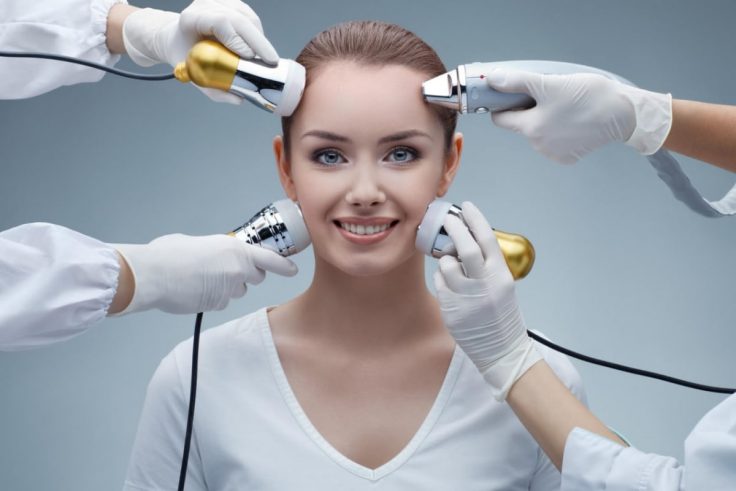
Skin is the largest and most exposed organ of our body. Luckily, there are laser skin treatments that help keep the skin smooth and clean.
Every day, our skin has to face several internal and external issues like the effects of hormonal imbalance, allergies, exposure to sun and pollutions, accidental cuts, and so much more.
Age is another crucial aspect that affects the skin and takes a toll on its appearance. Aging brings with it conditions like wrinkles, sagging, dark circles, and blemishes.
Cosmetic products like anti-aging creams promise to take care of all these issues, but most of them fail to treat the underlying conditions and improve the appearance on the surface.
This is where laser skin treatments come in.
What Are Laser Skin Treatments?
Laser skin treatmentskin problems
The high-intensity light beam vaporizes the skin tissues to treat the skin problem in concern and provides clear, smooth looking skin.
The laser beam used in laser treatments is known as Intense Pulsed Light (IPL), which is capable of treating complicated skin problems like skin pigmentation and blood vessels.
The procedure is done by pulsating short and concentrated light beams in the concerned area. It removes layers of skin and results in a new skin layer with the time that is clear of all the problems.
Skin Conditions That Can Be Treated With Laser
Laser treatmentsskin problems
- Acne Scars;
- Aging skin problems like fine lines and wrinkles and age spots;
- Birthmarks;
- Spider veins;
- Unwanted tattoos;
- Crow’s feet around eyes;
- Brown spots;
- Pucker marks;
- Uneven skin color;
- Sagging eyelid skin;
- Dark circles;
- Scars;
- Frown lines;
- Vascular lesions;
- Smoker’s line.
Types Of Lasers Used For Skin Treatment
There are different types of lasers used to treat various skin problems. The type of laser used depends on the target skin, a wavelength of the laser light, and the pulse duration needed to address the area and issue.
Laser skin treatments are broadly divided into two categories:
- Ablative Laser;
- Non-Ablative Laser.
Let’s understand the different types of treatments that fall under these two categories starting with ablative laser therapies.
Ablative Laser Therapy
Ablative laser therapylight
Simultaneously, the laser stimulated the underlying layer of the skin. This results in the formation of collagen and an improvement in conditions like wrinkles.
After the procedure, the doctor covers the area with an ointment and dressing. The skin then heals gradually to reveal smoother and lighter skin.
There are two ablative laser methods:
1. Carbon Dioxide Laser (Co2)
Carbon Dioxide Laser can treat skin conditions in case of acne scars, skin cancer, birthmarks, deep-set wrinkles, moles, skin tags, corns, and sun damage.
This is one of the oldest laser methods and is now used mainly for skin rejuvenation. Co2 laser is not ideal for dark skin tones and usually takes a long time to heal.
2. Erbium Yttrium-Aluminum-Garnet (Er: YAG)
This laser technique is used to treat moderately deep and surface levels lines and wrinkles on the face, chest, neck, and hands.
It can also take care of acne scars, sun damage, moles, and pigmentation. Er: YAG heals faster than CO2 Laser Treatment.
Non Ablative Laser Therapy
Non-ablative laser therapiescollagen growth
It also tightens the skin to improve its skin tone while removing fine lines and skin damage.
Three methods fall under this category:
1. Pulsed Dye Laser
Pulsed dye laserthe blood vessels
This treatment feels like a rubber band snap and can be used anywhere on the body.
The results of this treatment are permanent and can be used to treat conditions like stretch marks, capillaries, vascular lesions, and fine lines.
2. ND: Yag Laser
Neodymium Yag Laserhigh energy light
This treatment effectively takes care of spider veins, tattoo removal, hair removal, and pigmentation problems.
3. Alexandrite Laser
Alexandrite laser emits high energy light, which is converted to heat energy that damages that target area.
The process used in this laser therapy is known as photo-thermolysis and is effective in treating pigmented lesions, pigmentation, brown spots, birthmarks, and leg veins.
Are Laser Treatments Safe?
Laser treatmentssurgical procedures
- Ablative therapies can result in cold sores, milia, skin darkening, and infection.
- At the same time, non-ablative methods can cause blisters, hyperpigmentation, and, in rare cases, damage to the eyes (from exposure to laser).
Have you considered laser treatment for any of your skin conditions? Would you like to try laser hair removal? Talk to your skin specialist about your chances of finding permanent solutions with laser and which treatment will work best for you.
































